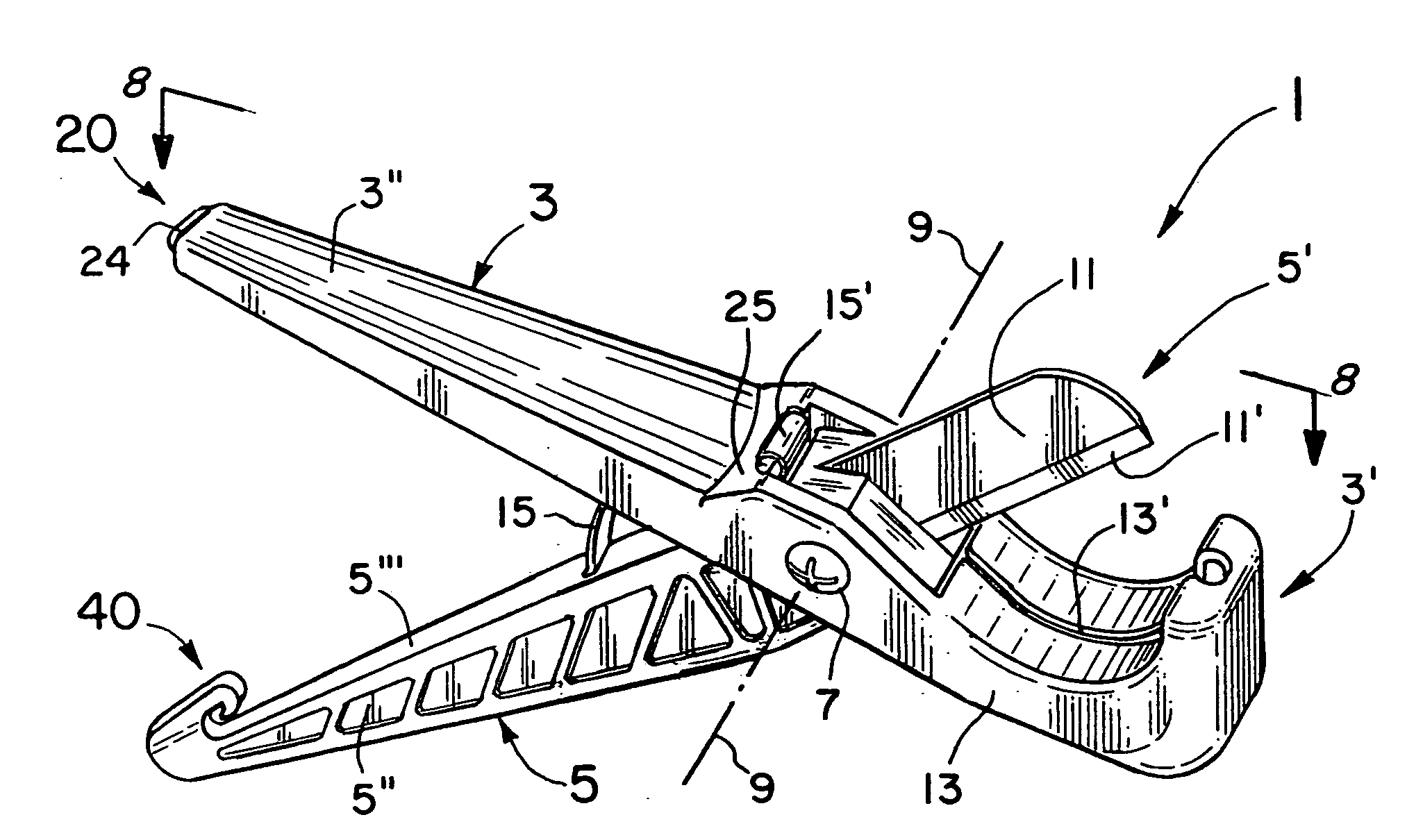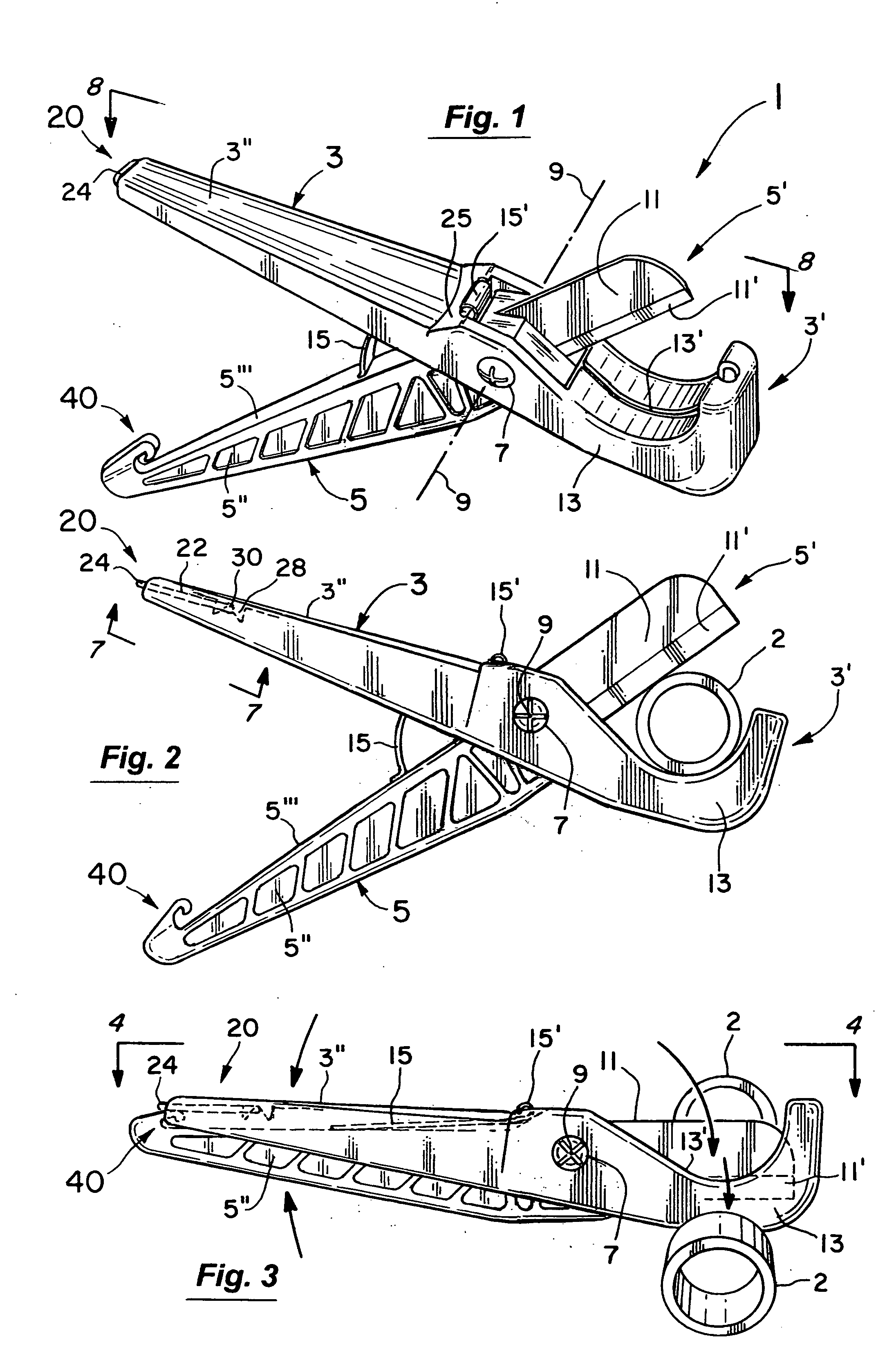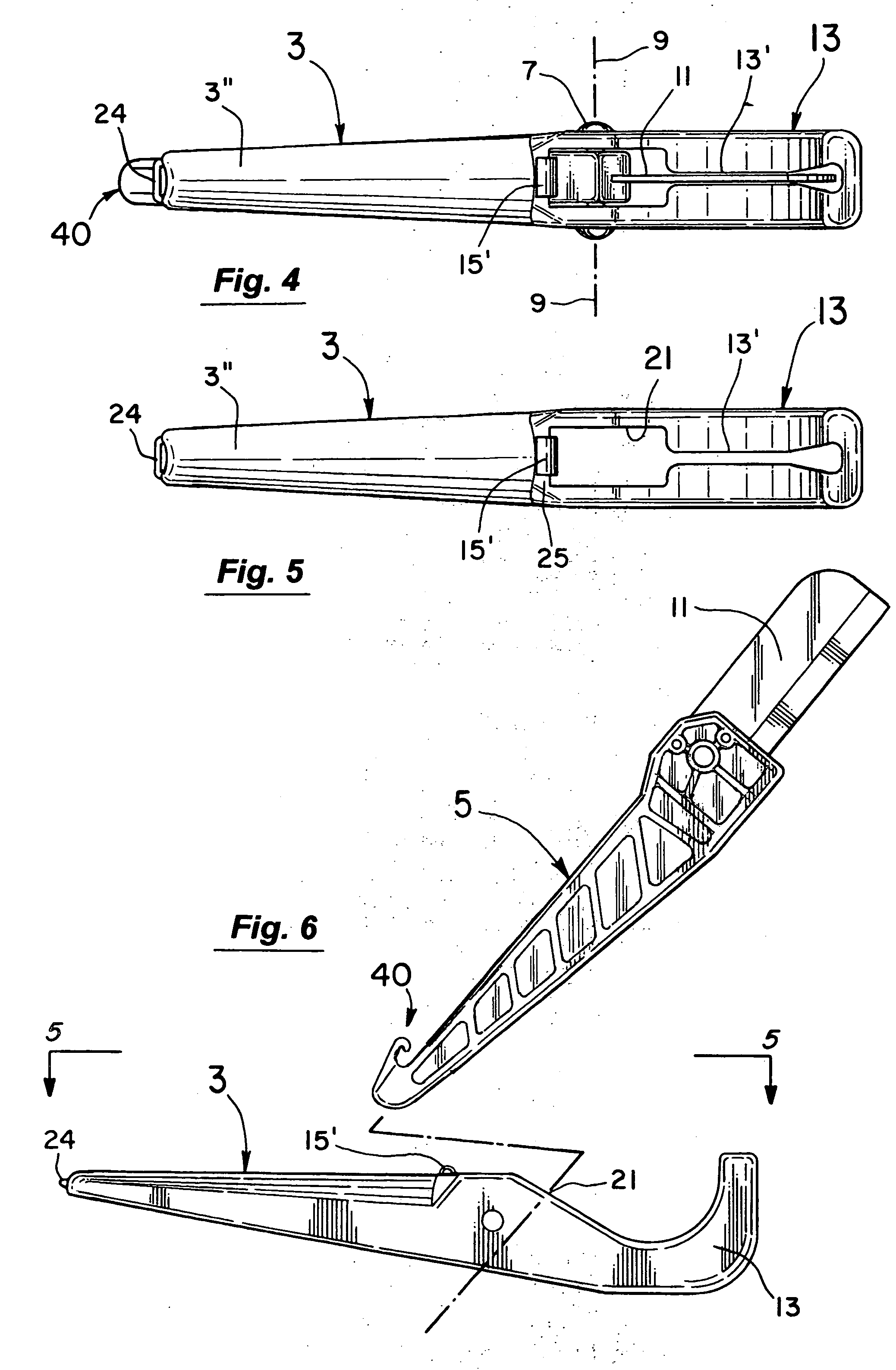Self-locking cutting tool for plastic pipes
- Summary
- Abstract
- Description
- Claims
- Application Information
AI Technical Summary
Benefits of technology
Problems solved by technology
Method used
Image
Examples
Embodiment Construction
[0022]As shown in the perspective view of FIG. 1, the cutting tool 1 of the present invention includes two elongated members 3 and 5. The elongated members 3 and 5 are connected at 7 in a scissors-like manner for pivotal movement relative to each other about the axis 9. The axis 9 as shown is substantially intermediate the respective ends of the members 3 and 5. Each elongated member 3 and 5 has a jaw portion 3′ and 5′ and a handle portion 3″ and 5″. The jaw portion 5′ of the elongated member 5 (see also FIG. 2) has a knife blade 11 at one end thereof and the opposing jaw portion 3′ of the elongated member 3 has a curved anvil 13 at the end thereof.
[0023]In operation, the pipe 2 to be cut (see FIG. 2) is first received between the opened jaw portions 3′ and 5′. The handle portions 3″ and 5″ are then manually squeezed together as the cutting tool 1 is preferably swung relative to the pipe 2 until the pipe 2 is severed (see FIG. 3). In doing so as illustrated in FIG. 1-4, the cutting ...
PUM
| Property | Measurement | Unit |
|---|---|---|
| Angle | aaaaa | aaaaa |
| Angle | aaaaa | aaaaa |
Abstract
Description
Claims
Application Information
 Login to View More
Login to View More - R&D
- Intellectual Property
- Life Sciences
- Materials
- Tech Scout
- Unparalleled Data Quality
- Higher Quality Content
- 60% Fewer Hallucinations
Browse by: Latest US Patents, China's latest patents, Technical Efficacy Thesaurus, Application Domain, Technology Topic, Popular Technical Reports.
© 2025 PatSnap. All rights reserved.Legal|Privacy policy|Modern Slavery Act Transparency Statement|Sitemap|About US| Contact US: help@patsnap.com



